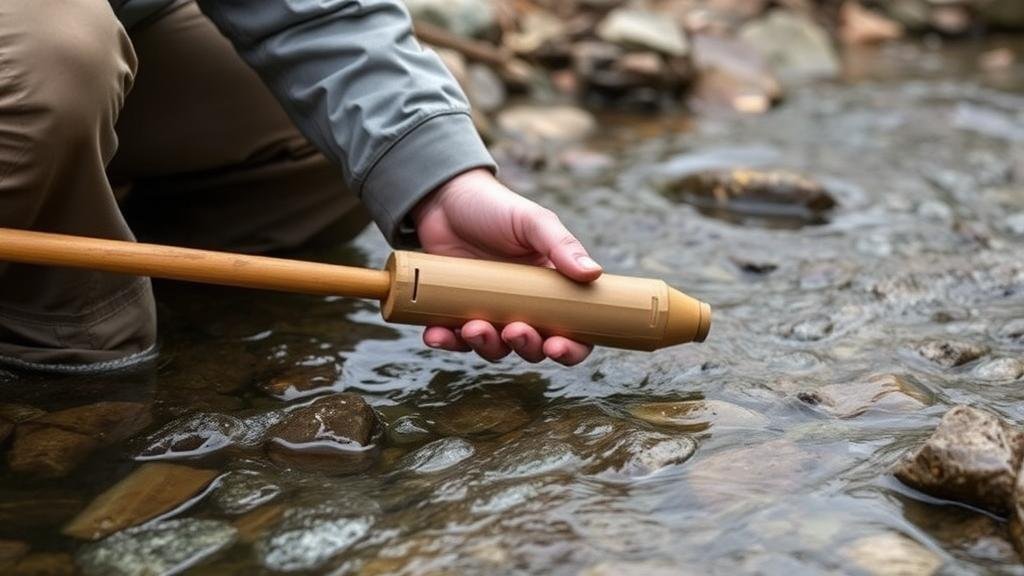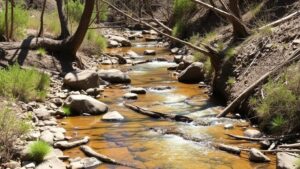Techniques for Sampling Stream Sediments Without Heavy Equipment
Techniques for Sampling Stream Sediments Without Heavy Equipment
Sediment sampling in streams is integral for various studies, including ecological assessments, sediment transport analyses, and pollution monitoring. While heavy equipment often facilitates large-scale sediment analysis, there are effective techniques for sampling stream sediments using minimal to no heavy machinery. This article presents various methodical techniques, benefits, and considerations for scientists and environmentalists working in the field.
Understanding Stream Sediment Sampling
Stream sediments comprise particles of varying sizes, including gravel, sand, silt, and clay, transported by water flow. Understanding sediment composition and quality is crucial for evaluating water quality and ecosystem health. Sampling sediment can be challenging due to the dynamic nature of water flow, but several techniques enable researchers to gather representative samples effectively.
Common Techniques for Sediment Sampling
- Grab Sampling
- Core Sampling
- Suspended Sediment Sampling
- Use of Sediment Traps
Grab Sampling
Grab sampling is a straightforward technique wherein samples are collected manually from specific locations within the streambed. A bucket, trowel, or hand-held sampler can be used to collect sediment from the surface layer of the sediment bed. This technique is especially effective for assessing the sediments physical and chemical attributes at that particular site.
For example, during a study on the impact of agricultural runoff on stream health, researchers employed grab sampling to collect sediment for subsequent laboratory analysis of contaminants such as nitrates and phosphates. The simplicity and low-cost nature of grab sampling make it an accessible method for many field researchers.
Core Sampling
Core sampling involves extracting a cylindrical segment of sediment from the streambed, providing a vertical cross-section of the sediment layers. This technique can be executed using simple tools such as a hand-held corer or a PVC pipe. Core samples offer insights into sediment stratigraphy and historical sediment deposition rates, making them valuable for long-term studies.
For example, scientists studying the sedimentation patterns in a river affected by dam operations used core sampling to analyze different sediment layers. By examining the characteristics of each layer, they could determine changes over time, informing management practices for the river system.
Suspended Sediment Sampling
This technique involves collecting sediments that are suspended in the water column rather than those resting at the bottom. Using simple devices like sediment samplers or bottles, researchers can obtain samples of suspended materials during varying flow conditions. This method is particularly important for understanding sediment transport and turbidity levels, crucial for aquatic ecosystems.
For example, researchers measuring sediment loading in a river during peak rainfall periods utilized suspended sediment sampling. They found that the highest concentrations of suspended sediments significantly correlated with increased turbidity, affecting the habitat for fish and other aquatic organisms.
Use of Sediment Traps
Sediment traps are simple devices set in the stream to collect sediment particles as they settle. Constructed from inexpensive materials such as plastic containers, traps can effectively gauge sedimentation rates over time. Adjustments can be made to the trap height and orientation to target specific sediment fractions.
A notable case involved a study on sediment retention in constructed wetlands, where researchers installed sediment traps in the inflow areas. The collected sediment was analyzed for composition and contaminants, providing insights into the effectiveness of wetland environments in filtering out pollutants.
Considerations for Effective Sediment Sampling
When sampling stream sediments without heavy equipment, it is vital to consider factors such as timing, location, and environmental conditions.
- Timing: Plan sampling during low-flow periods to obtain clearer sediment profiles.
- Location: Select sites with diverse sediment characteristics to ensure representative sampling.
- Environmental Conditions: Monitor weather patterns and stream activities that may alter sediment transport.
Conclusion and Actionable Takeaways
Sampling stream sediments without heavy equipment is not only feasible but also essential for numerous environmental studies. Techniques such as grab sampling, core sampling, suspended sediment collection, and sediment traps provide valuable data while remaining cost-effective and accessible.
Researchers should remain aware of the specific conditions and objectives of their studies to select the most appropriate methods. By understanding and applying these techniques, professionals can significantly contribute to the understanding of sediment dynamics and environmental health.



